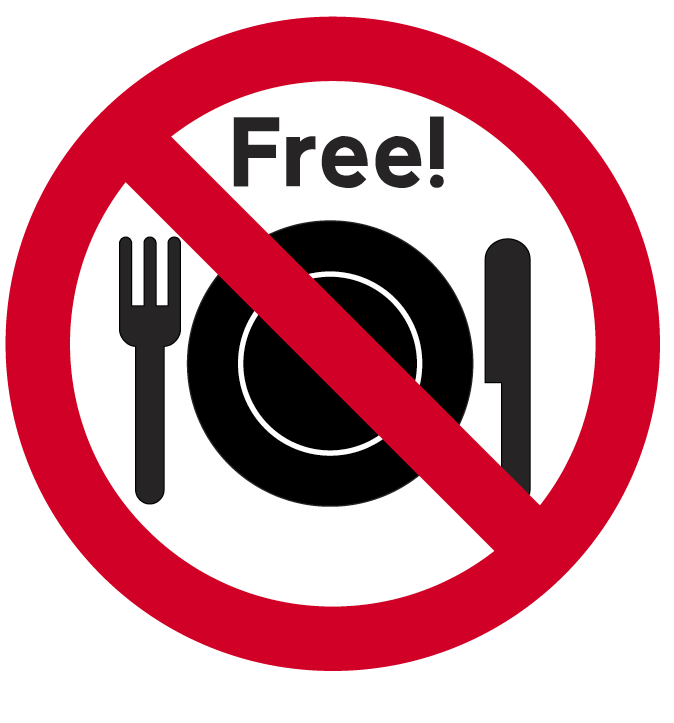
“There’s no such thing as a free lunch.”
What does it mean?
Things that are offered for free always have a hidden cost.

Where does it come from?
Free lunch was a commonplace term in the USA from the mid 19th century onward. It wasn’t used to describe handouts of food to the poor and hungry though, it denoted the free food that American saloon keepers used to attract drinkers; for example, this advertisement for a Milwaukee saloon, in The Commercial Advertiser, June 1850:
At The Crescent…
Can be found the choicest of Segars, Wines and Liquors…
N. B. – A free lunch every day at 11 o’clock will be served up.
Free lunches, often cold food but sometimes quite elaborate affairs, were provided for anyone who bought drink. This inducement wasn’t popular with the temperance lobby and so the economy and thinking changed to where saloon customers always ended up paying for the food in the price of the drinks they were obliged to consume. Indeed, some saloon keepers were prosecuted for false advertising of free lunch as customers couldn’t partake of it without first paying money to the saloon.
It was into this context that the economic theorists enter the fray and ‘there’s no such thing as a free lunch‘ is coined. It isn’t known who coined the phrase.
 Blog EBE English Book Education
Blog EBE English Book Education

